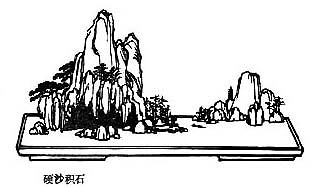Sun Zi 
 – The Art of War
– The Art of War
Chinese strategy explained : know yourself and the ennemy, use deception, spies, and "win with ease". Tr. Giles (en, annotated) and Amiot (fr).
The Attack By Fire
Rather more than half the chapter (SS. 1-13) is devoted to the subject of fire, after which the author branches off into other topics.
Sunzi XII. 7.
4) If it is possible to make an assault with fire from without, do not wait for it to break out within, but deliver your attack at a favorable moment.1
5) When you start a fire, be to windward of it. Do not attack from the leeward.2
A wind that rises in the daytime lasts long, but a night breeze soon falls.3
Giles XII.9,10,11.
Si malgré toutes vos mesures et tous les artifices que vous aurez pu employer, il n'a pas été possible à vos gens de pénétrer dans l'intérieur, et si vous êtes forcé à ne pouvoir mettre le feu que par dehors, observez de quel côté vient le vent ; c'est de ce côté que doit commencer l'incendie ; c'est par le même côté que vous devez attaquer. Dans ces sortes d'occasions, qu'il ne vous arrive jamais de combattre sous le vent. Si pendant le jour le vent a soufflé sans discontinuer, regardez comme une chose sûre que pendant la nuit il y aura un temps où il cessera ; prenez là-dessus vos précautions et vos arrangements.
Amiot

The Art of War – Sun Zi XII. 7. – Chinese off/on – Français/English
Alias Sun Tzu, Sun Wu, Sun Tse, Sunzi Bingfa, Souen Tseu, Souen Wou, 孫武.
The Book of Odes, The Analects, Great Learning, Doctrine of the Mean, Three-characters book, The Book of Changes, The Way and its Power, 300 Tang Poems, The Art of War, Thirty-Six Strategies
Welcome, help, notes, introduction, table.
Index – Contact – Top
